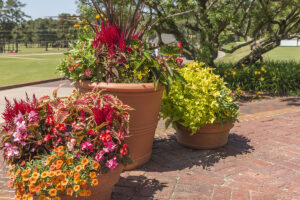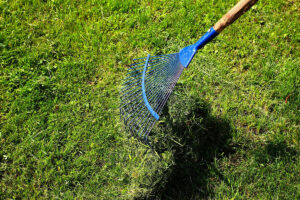errariums are gaining in popularity. We love them for their beauty and simplicity. They add a little greenery to any decor and don’t require a lot of care, which is ideal for those who love plants but don’t have a green thumb! Often presented in a glass container, terrariums can be used as table decorations or hung for a really interesting aerial look. Moreover, terrariums are very pleasant to make and allow you to let your creativity run free; you can make them evolve by changing the decorative elements. It’s a great way to introduce kids to the joy of gardening: making a terrarium is pretty simple and a lot of fun.
Here’s what you’ll need:
- A container with a good opening
- Gravel
- Sphagnum moss
- Potting soil adapted to the plants you choose
- Plants
- Decorative elements: sand, stones, pebbles, figurines, and others
How to do it:
- Place a bed of gravel at the bottom of your container. This porous layer of 2 to 3 centimeters will serve to collect excess water. It also adds a nice decorative element to your terrarium.
- Add sphagnum moss to your gravel bed, about 2 centimeters thick.
- Then cover with a layer of potting soil that you have previously moistened. We want it moist, but not soggy. Put in enough potting soil to completely cover the root ball of your plants.
- Plant your plants, starting with the largest. Avoid sticking the leaves to the sides of the container.
- Pack the potting soil lightly around your plants once you are satisfied with the arrangement of them.
- Cover the visible soil with sand or decorative stones and insert other decorative elements of your choice through the plants.
- Place your terrarium and admire your work. Avoid placing your terrarium in direct sunlight. The glass creates a magnifying glass effect that can easily burn your plants.
Terrarium maintenance
Plants in a terrarium do not require much care. You should water as needed, when the soil is dry and in small doses. If you use plants that appreciate humidity, spray the foliage occasionally. It is not necessary to fertilize terrarium plants, but if you do, choose a natural plant food, synthetic ones should be avoided.
Always remove yellowed or wilted leaves from your plants to prevent them from falling off and decomposing in the environment. If the plants become too big, prune them so that the aesthetics of your terrarium remains interesting. If you wish, replace complementary elements to follow the seasons; even add some glitter for the holidays, why not?
Choosing plants for a terrarium
Many plants can live well in a terrarium. Of course, your plants must be small, but the most important thing is to choose varieties that have the same water and food needs and that appreciate the same environment. A terrarium becomes a microclimate that may not appeal to everyone.
Succulents are excellent candidates for terrariums. Their shallow roots, low water requirements and heat tolerance make them thrive in this environment. Choose for example:
- haworthia
- echeveria
- kalanchoe
- senecio pearl necklace
You can also create terrariums with plants that appreciate humid environments, such as butterfly orchids or ivy. You will have to spray your creation once or twice a week.
Come in garden centre to find several plants in mini versions ideal for your terrariums. Ask the experts for advice to ensure that your choices go well together and that they will make a happy and harmonious mix. Have fun!







